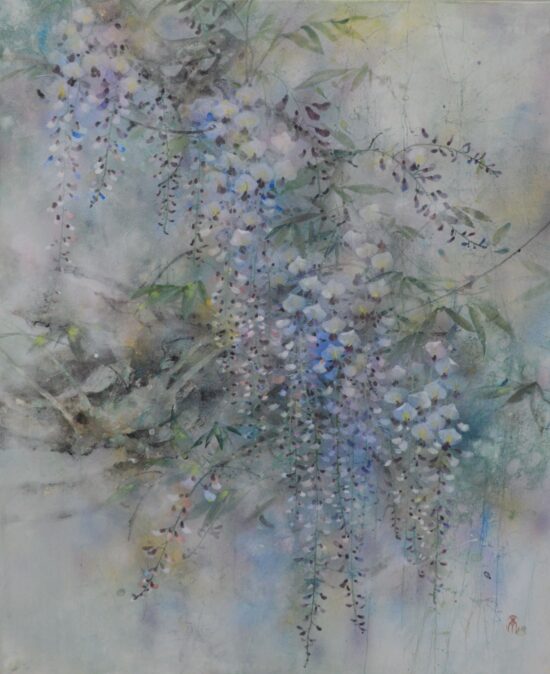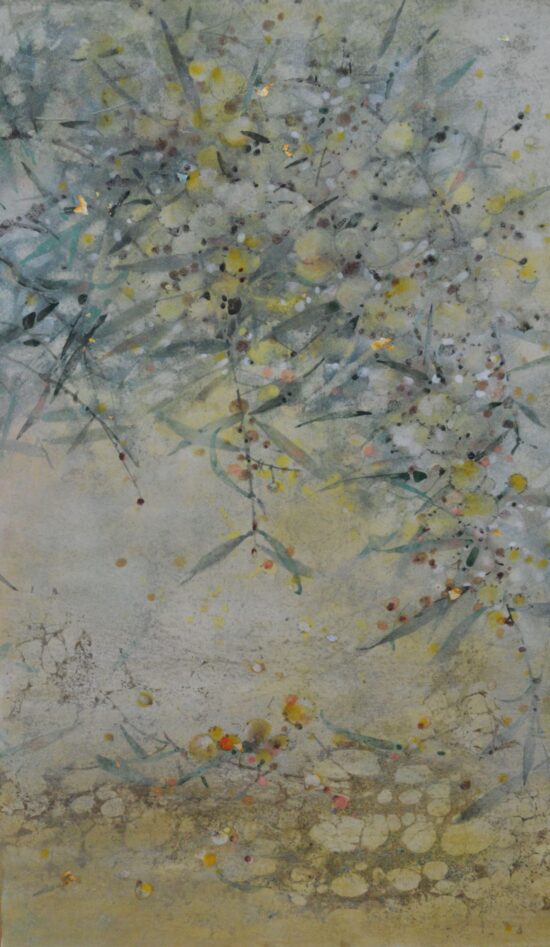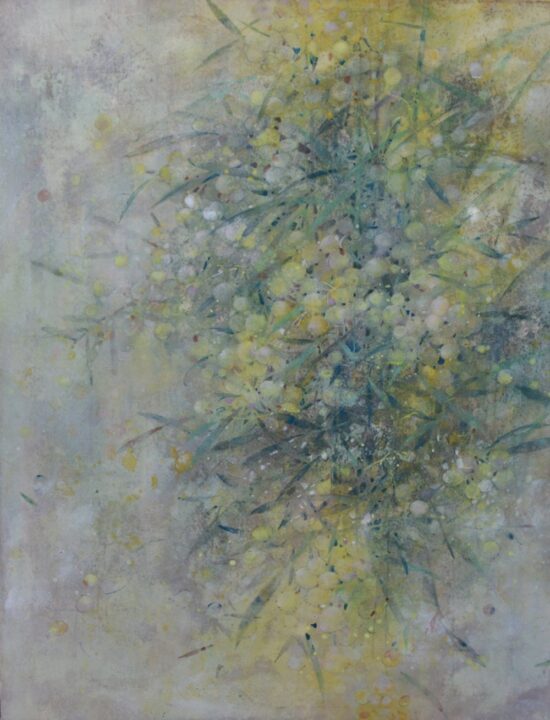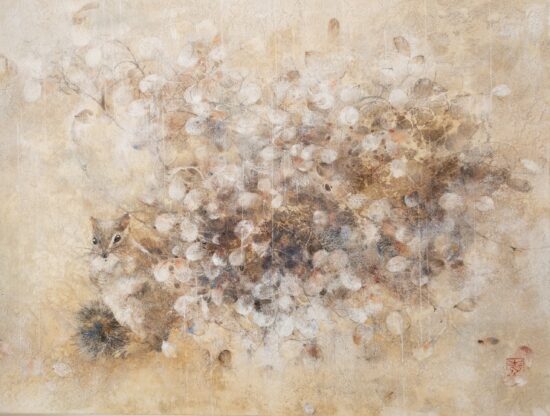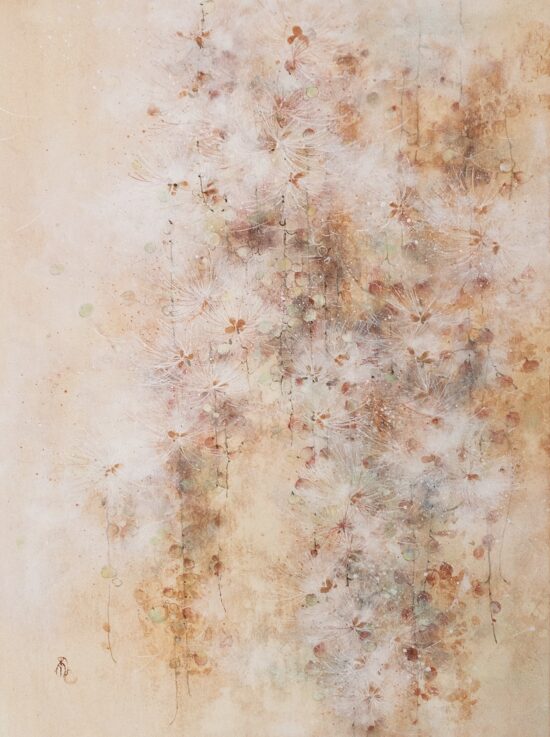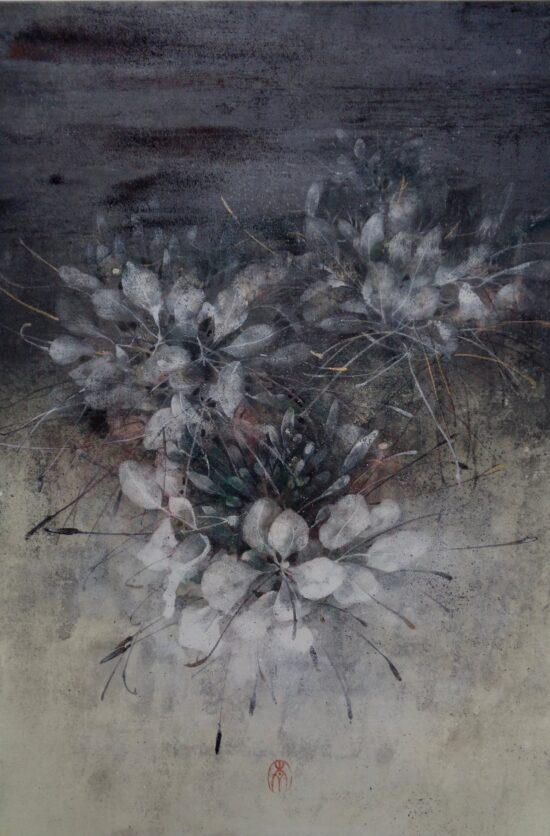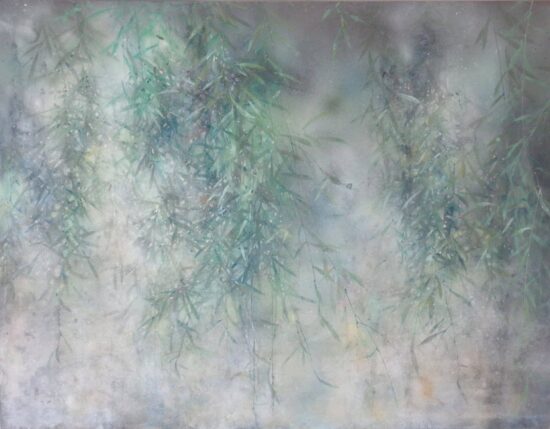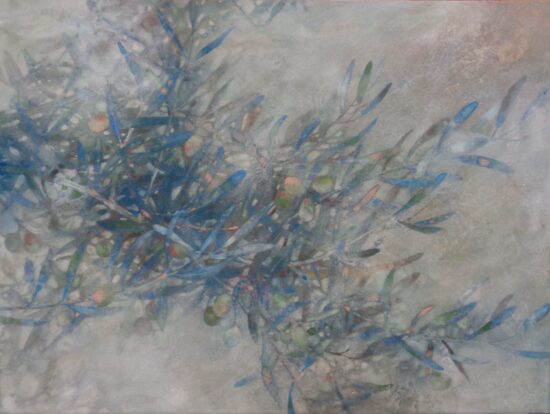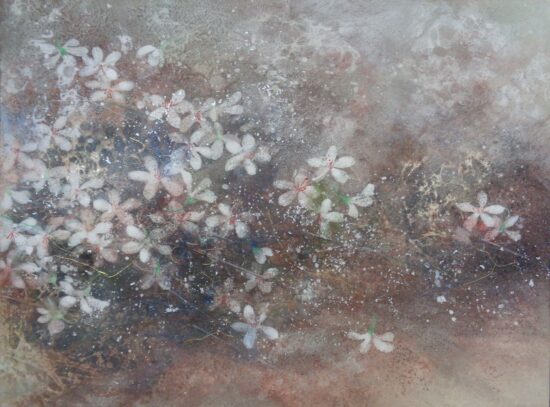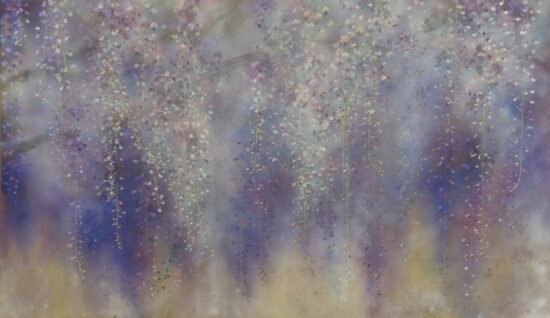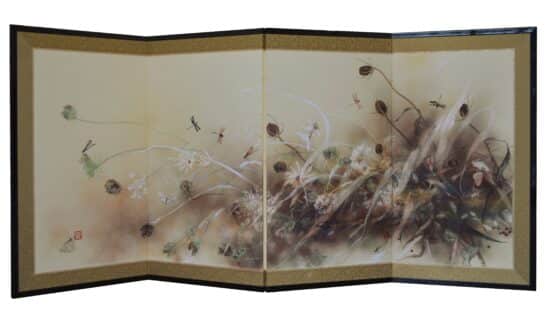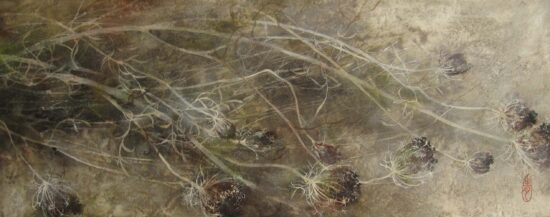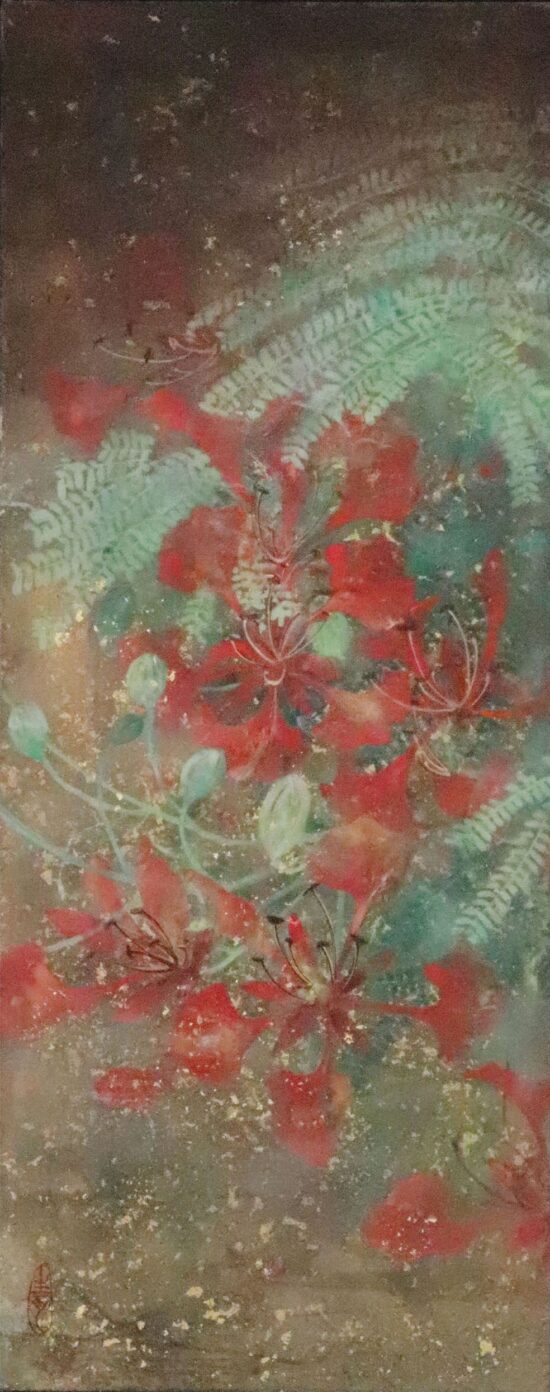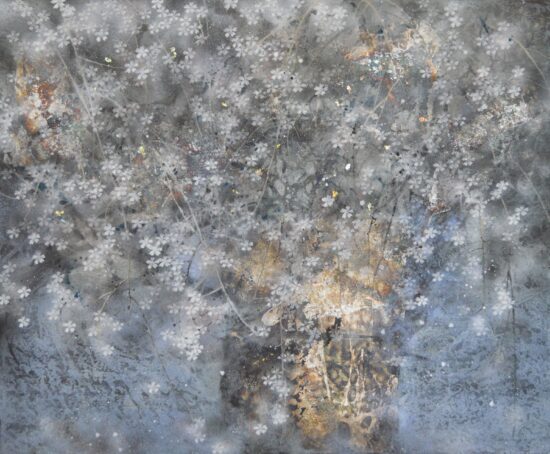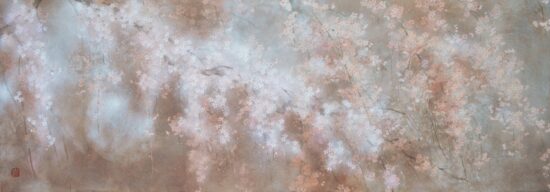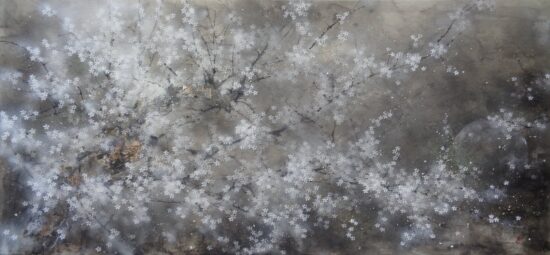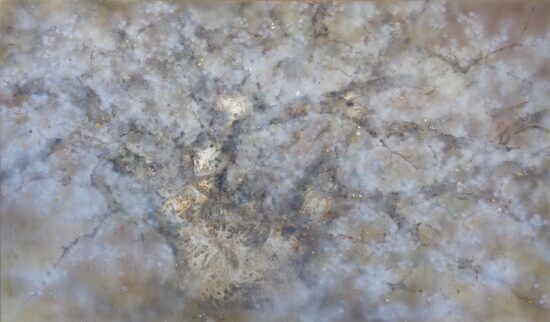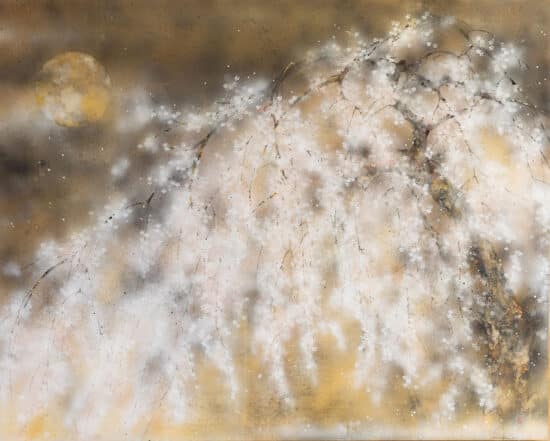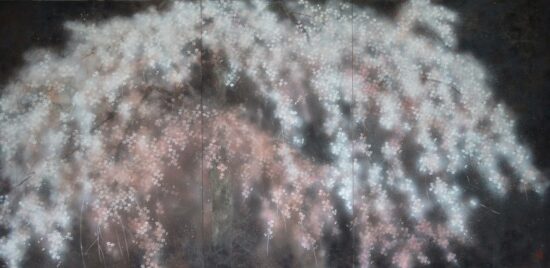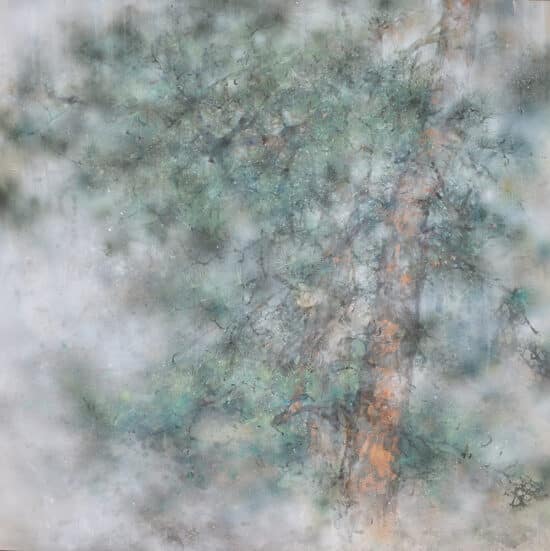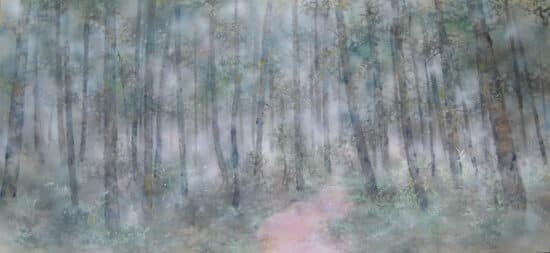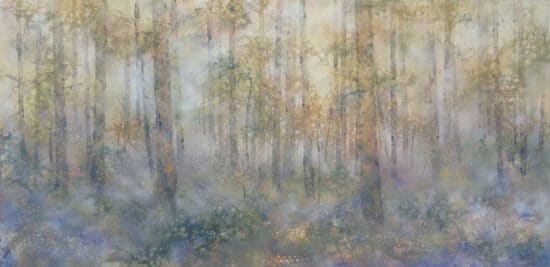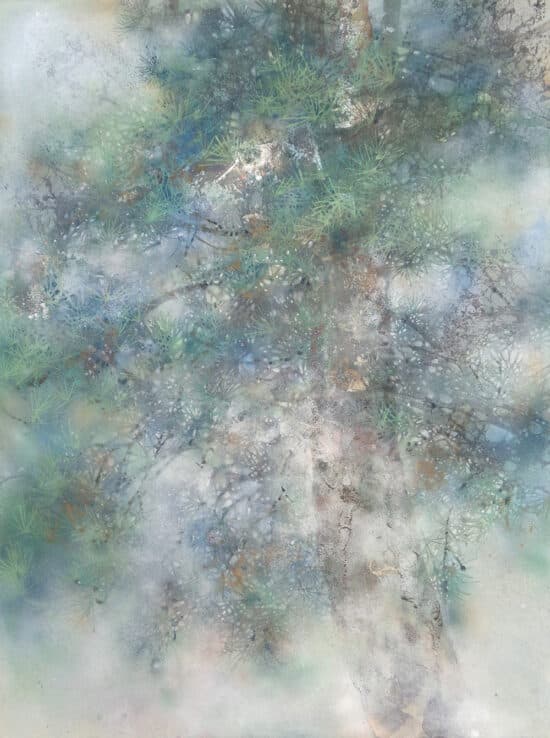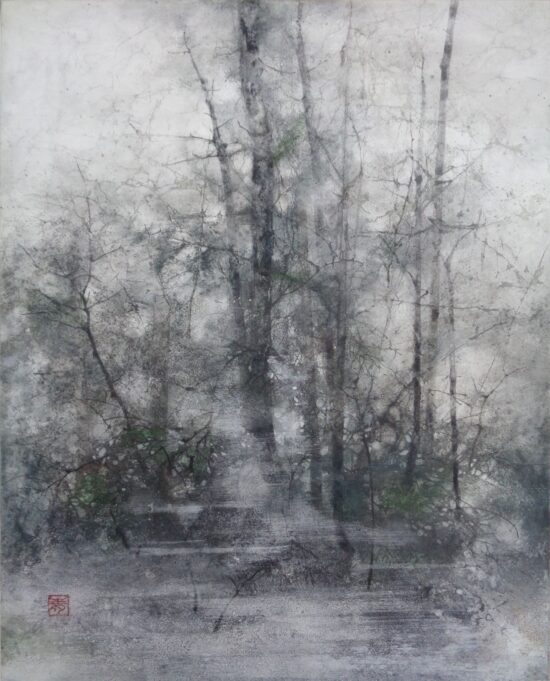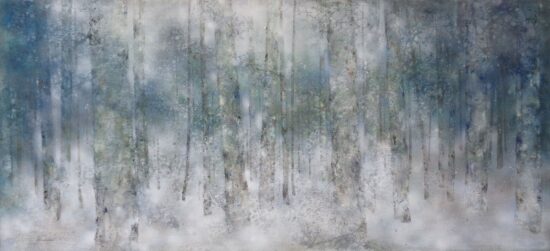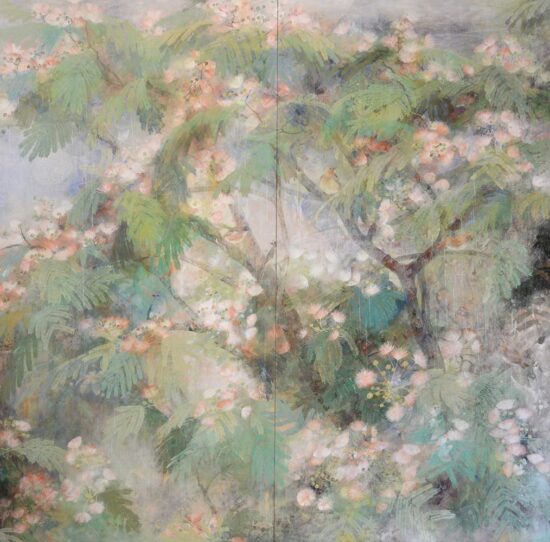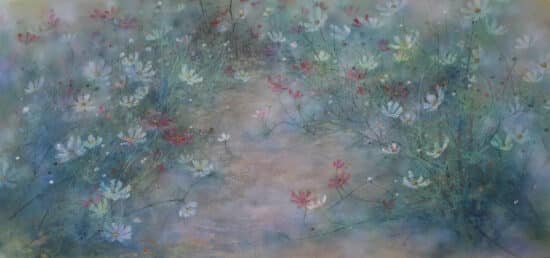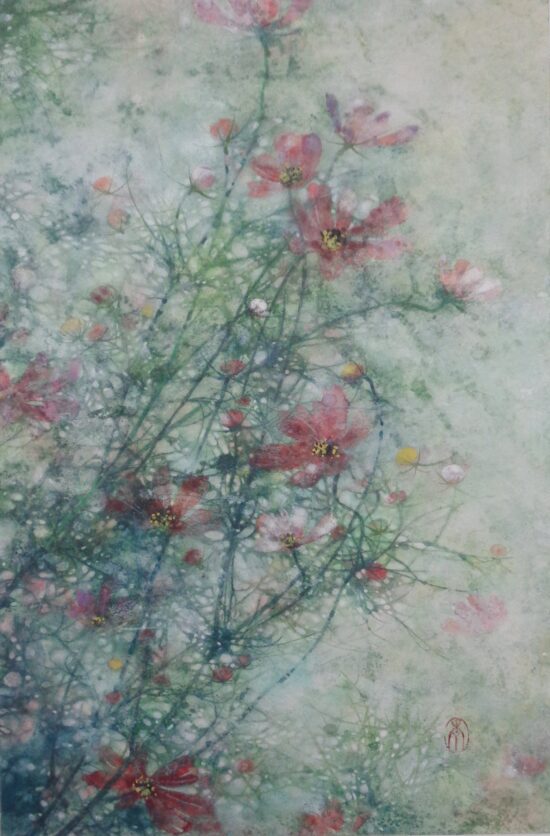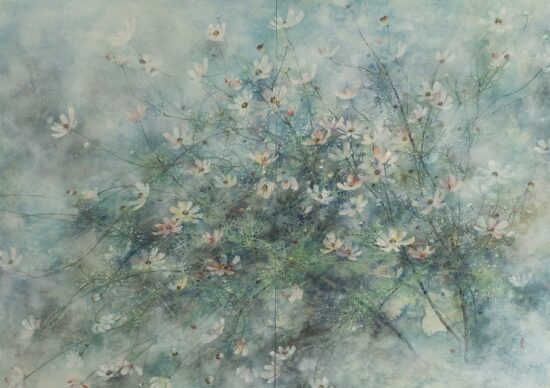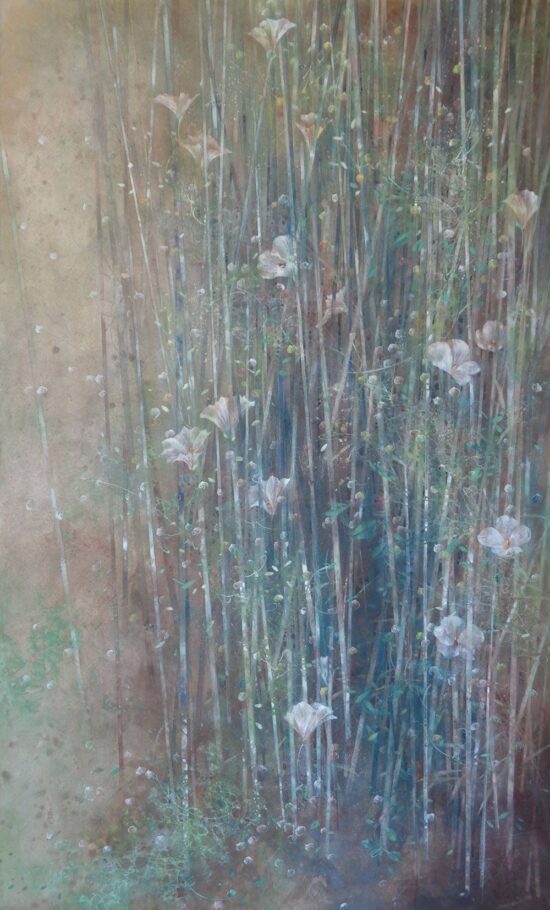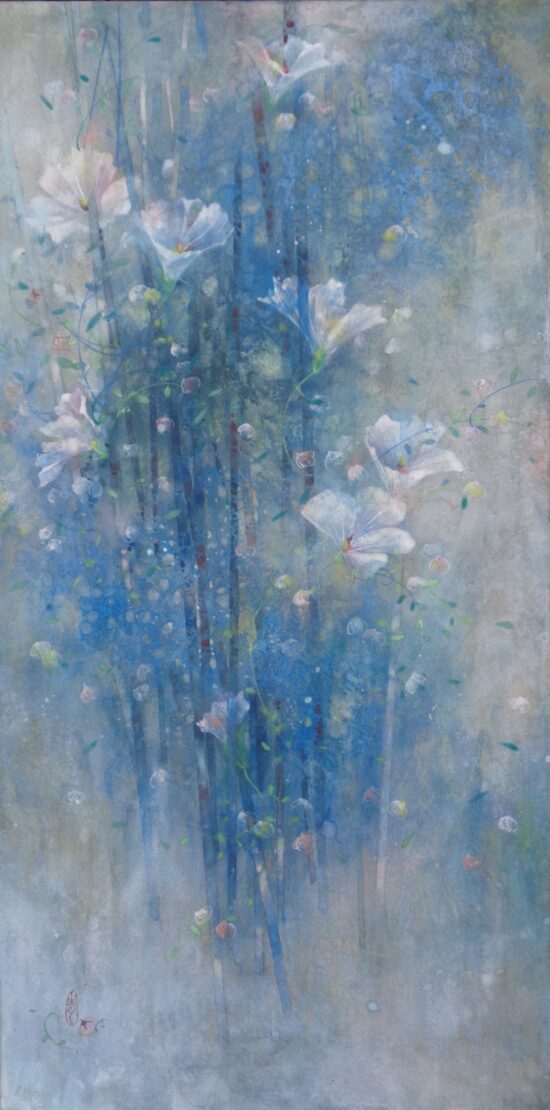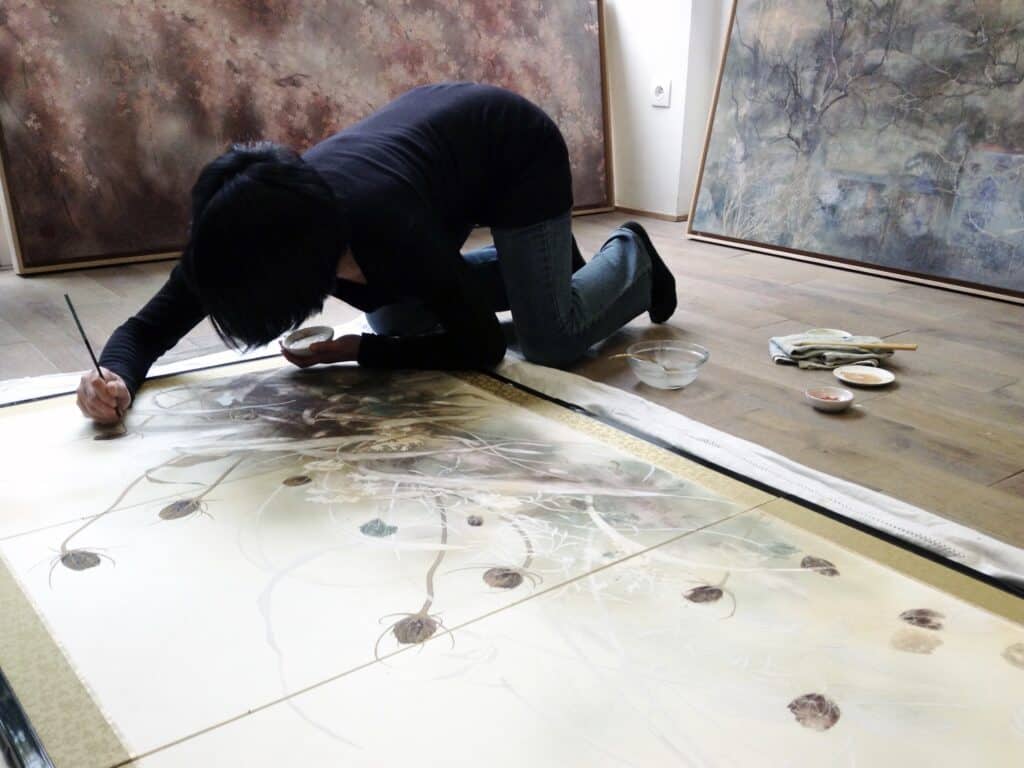Seasonal flowers
Cherry Trees
Forests
Cosmos
Flax
Biography
Chen Yiching is a contemporary painter born un Taïwan in 1975. She produces floral artworks which delicateness equals the precision required by the Nihonga, a Japanese traditional pictorial technique used for their composition. Each of her artworks is an implementation of this centenary traditional technique the artist is passionate of, and these paintings contribute to the remanence of the Nihonga technique in the contemporary art landscape.
An artist guided by her sensibility
Chen Yiching has a well-rounded education. She first joined the Institute of Fine Arts at the Kyoto Municipal University of Arts to study Japanese painting. There, she studied alongside the great and important Japanese Nitten master Takao Yamazaki, a dedicated Japanese Fine Arts and exhibit organization. During her studies, Chen Yiching discovered the Nihonga technique whilst visiting an exhibition. She describes this decisive moment in her artistic life as an aesthetic shock: the ‘positive energy’ given off by the painting’s minerals created a deep marked feeling. Prepared with her traditional education, she moved to Paris in 2007 to develop an experimental approach at the heart of Impressionism’s global cradle, an artistic movement close to her heart.
For Chen Yiching, pictorial creation is a matter of sensitivity. She needs calm and concentration during the creative process to capture a ‘moment of nature’. Aware of life’s transience, Chen Yiching has to feel and understand the motif behind it prior to painting, in order to catch nature’s cycle.
The aesthetic language of Nihonga
Nihonga literally means: ‘Japanese’ (nihon), ‘painting’ (ga). It keeps a close poetic relationship with the elements of nature, not only with subjects, but also with the materials used in its technical creation. Although traditional, this technique offers creative possibilities that can be constantly added to, especially with the use of colour. Indeed, this highly meticulous technique firstly requires the creation of the pigment (enogu) from crushed minerals and plants which once mixed with glue (nikawa) and water creates the paint, the raw material of Nihonga. Traditionally applied in several successive layers on mounted paper, this raw material, sometimes augmented by metal leaf, produces an impression of surprising transparency typical of Chen Yiching’s works such as ‘Hanami’, a true masterpiece.
Though very rarely seen in Europe and the United States, this traditional technique possesses the finesse and subtlety associated with Japanese art. Significant ability and know-how is required at each stage; deeply committed to its recognition outside of Japan, in 2012, Chen Yiching wrote and published the first French book on the subject, which has since become a main reference on the matter in Europe. Thanks to her expertise, she also teaches at the highly prestigious and well respected French Asian Arts public museum: The Guimet Museum, in Paris.
Keeping Nihonga tradition in contemporary art
Her traditional teachings by the great Nihonga masters, as well as her long experience of the technique makes her one of the world experts. For twenty years, Chen Yiching’s paintings have been admired in Asia, and particularly in Japan where she exhibits frequently. In 2003, she was awarded the Shouhaku Museum’s Grand Prize by its president, Master Atsushi Uemura, to whom she would become a student. This award is in addition to a series of eleven prizes and medals awarded to her by Japanese and French institutions.
Exhibited several times in Taiwan, Hong Kong, Tokyo or Kyoto, as well as in Europe, Chen Yiching’s work helps keep Nihonga on the international artistic stage and to carry on this century-old traditional art. The Nihonga is being included more and more into bodies of contemporary painting: artworks are joining the ranks of museum’s collections, such as the MET in New York and the Museum of Fine Arts in Boston. Although the practice has only a few European specialists, it is attracting a growing interest amongst collectors and lovers of contemporary Western art.
CV
Education
- Master at the Institute of Fine Arts, Kyoto City University of Arts (Japan)
Exhibitions
- 2022 : Fine Art Consultancy (Londres, GB)
- 2022: Art Central (Hong Kong, China)
- 2021: OFI Asset Managment (Paris, France)
- 2021: Fine Art Asia 2021 (Hong Kong China)
- 2021 – Personal exhibition, KOO Gallery (HongKong)
- 2021 : Exposition personnelle, 508 Gallery (London, England)
- 2020: LA Art Show, exhibited by Fine Art Consultancy (London, UK)
- 2019: Context Art Miami, exhibited by Galerie KOO (Miami, USA)
- 2019: Fresh : Art Fair, exhibited by Fine Art Consultancy (London, UK)
- 2019: Affordable Art Fair Hong Kong, exhibited by Galerie KOO (Hong Kong)
- 2018: AQUA Art Miami, with Fine Art consultancy London & Tokyo (London, UK)
- 2018: “Nihong-ga”- Solo Show – d’Haudrecy Art Gallery – Knokke-Zoute (Belgium)
- 2017: Personal exhibition, Tokyu Honten dpt store, Dogenzaka, Shibuya-ku, (Tokyo, Japan)
- 2016: Galerie d’Haudrecy (Knokke, Belgium), Solo show
- 2015: Musée des Arts asiatiques de Toulon (Toulon, France), Solo show
- 2014: Orangery of the Caillebotte Estate (Yerres, France), Solo show
- 2014: “Nihon-ga”, Exhibition of Chen Yiching and her student’s artworks, Espace des Femmes, (Paris, France)
- 2013: Galerie Fondation Taylor (Paris, France)
- 2013: Maison de la culture du Japon (Paris, France), Solo show
- 2012: Galerie Sinitude (Paris, France),
- 2011: Galerie Librairie Impressions (Paris, France),
- 2010: Japan Expo (Paris, France)
- 2009: Galerie Everarts (Paris, France), Solo show
- 2008: Galerie Béranger (Tours, France),
- 2008: Espace Saint-Pierre of Montmartre (Paris, France)
- 2007: Galerie 43 (Paris, France),
- 2006: Townhall of the 8th arrondissement (Lyon, France), Solo show
- 2006: City Cultural Center (Taichung, Taiwan), Solo show – supported by the National Culture and Arts Foundation of Taiwan
- 2006: Art en Capital (Paris, France) (2008, 2009)
- 2006: Salon d’automne (Paris, France) (~2009)
- 2006: International Salon of Spring of the Lyon Company of Fine Arts (Lyon, France)
- 2005: Galerie Yamashita (Kyoto, Japan), Solo show
- 2004: Nasic Square (Kyoto, Japan), Solo show
- 2004: Exhibition of Japanese Painting of Garyuzakura (Takayama, Japan)
- 2004: Exhibition in memory of Maedaseison (Nakatsugawa, Japan)
- 2003: Exhibition of flower and bird painting at Shouhaku Museum (Nara, Japan)
- 2003: Exhibition of Japanese painting of Aogaki (Aogaki, Japan)
- 2003: Exhibition of Zenkansai art at the City Museum of Art (Osaka, Japan)
- 2003: Overview Exhibition of National Community, the 17th Art Festival of Tokyo (Tokyo, Japan)
- 2002: Exhibition of Nishunten (touring, Japan) (~2003)
- 2002: Exhibition of Kyôten at the City Museum of Art (Kyoto, Japan) (~2003)
- 2002 : nk painting exhibition in memory of Sessunosato (Okayama, Japan)
- 2000: Zhongbu Art Exhibition (Taichung, Taiwan)
- 2000: National Art Exhibition (touring, Taiwan)
- 2000: Taipei Art Exhibition (Taipei, Taiwan)
- 2000: Taiyang Art Exhibition (Taipei, Taiwan)
Awards & Residencies
- 2008: Bronze medal for painting – Salon des artistes français (Paris, France)
- 2006: 1st prize for painting – Painting and Sculpture Salon of the Palette décinoise (Décines, France)
- 2006: Grant from National Fundation of culture and arts (Taïwan)
- 2003: Grand prix – Exhibition of Floral and avian painting at Shouhaku Museum (Nara, Japan)
- 2003: Artistic Culture Prize – Aogaki exhibition of Japanese painting (Aogaki, Japan)
- 2003: 2nd Prize – Exhibition of Zenkansai art at the Osaka City Museum of Art (Osaka, Japan)
- 2003: National Community Prize – Overview exhibition of the national community of the 17th Art Festival of Kyoto (Kyoto, Japan)
- 2003: Grant from Ministry of education, culture, sports, sciences and technology (Japon)
- 2000: First Prize – Zhongbu Art Exhibition (Taichung, Taiwan)
- 2000: First Prize – Art Exhibition of the Department of Taipei (Taipei, Taiwan)
- 2000: Award of Excellence – Art Exhibition of Taiyang (Taipei, Taiwan)
Articles
CHEN Yiching at the Toulon Museum of Asian Art
The Musée des Arts Asiatiques in Toulon (France) is devoting an exhibition to Taiwanese artist CHEN Yiching until 21 November. This is an...



